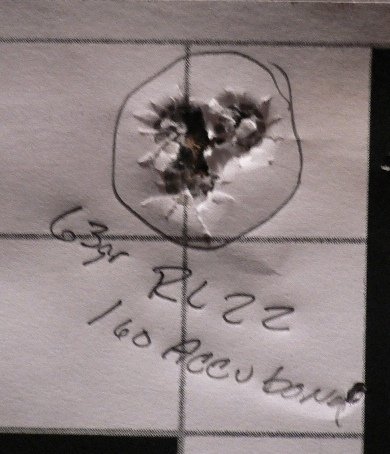Navigation
Install the app
How to install the app on iOS
Follow along with the video below to see how to install our site as a web app on your home screen.
Note: This feature may not be available in some browsers.
More options
You are using an out of date browser. It may not display this or other websites correctly.
You should upgrade or use an alternative browser.
You should upgrade or use an alternative browser.
Range day. Strange results.
- Thread starter rhipsher
- Start date
MKotur325
New member
PS- Most people that flinch don't think/realize they do...
Very True! I developed a flinch with my .325WSM after taking it through a precision rifle course. Haven't been able to shoot it the same since. I put 95 rounds through that rifle in 2 days. I didn't realize I was flinching until I put the rifle on paper the second day. After that, I put it down and became a spotter. It is a 1/2moa rifle, I'm now lucky to shoot it to 1.5moa 3 years later. And will almost always have at least one flyer 2.5-3MOA to 11 o'clock when I really flinch.
My other hunting rifle still shoots 1/2moa with factory fodder. But as 1_pointer said. The Ballistic Silvertips are a bullet i would shoot at Bears. If you are a fan of the Winchester ammo, find some CT Accubonds, XP3's or E-Tips. My first suggestion would be to swap to Red Box Federal ammo with a 180gr well constructed bullet. Trophy Bonded Tip, Nosler Partition, and Barnes TSX or TTSX are all good options. Both my hunting rigs do not care for the black coating that Winchester uses on their slugs.
The Absolute best way I've found to test for a flinch... Take a friend to the range and have them load the rifle with a random assortment of live rounds and once fired cases. Don't let them tell you which round they are loading. Watch your reaction in the scope, do the crosshairs move when the trigger breaks? If you have a flinch, this will show it.
Big +1 for Rimfire shooting!! May also switch targets. Round targets are easy to see, but it can make the exact aiming point difficult. If you swap for a target with diamonds each diamond gives you 5 spots to shoot at. You can shoot at the center and at each corner. It may help you to refine the aiming point. IMO it is much easier to aim at a point than trying to aim at the exact center of the circle.
noharleyyet
Well-known member
I never flinched until owning an unbraked 300 weatherby. The mule is gone but I still have flashbacks and prejump a round every once in a while. 300 Win mags and an ultra 7 don't bother me much if I practice good trigger control.
stillkickin
Well-known member
A Lead Sled is a good way to break scopes and wooden rifle stocks. I'm sure there are lots of guys that have never had problems with them, but there are enough that have that I'd never use one.
Couldn't agree more! Also I can shoot a group much tighter off of a bag rest than I can off of one of those contraptions. Not to mention having to drag the behemoth to and from the range.
MinnesotaHunter
Well-known member
A Lead Sled is a good way to break scopes and wooden rifle stocks. I'm sure there are lots of guys that have never had problems with them, but there are enough that have that I'd never use one.
That is a good point Oak, I have never seen that, but it makes sense. I don't own one, but I know a couple people that do, but seem to only use them sparingly. I will have to remember that if I am every testing a bunch of rounds in my Ruger 77 RSM .375.
Either way, I would try and figure out how to take the human element out of this equation, before you sink a bunch of money in the rifle.
Bambistew
Well-known member
I'd say the target looks pretty darn good for a new shooter and big rifle. That black and blue shoulder you mentioned is ripe for creating a flinch. I'd look into a "puss" pad for your shoulder or a lead sled to sight in to see how shoots, then go to field positions.
Lots of good suggestions, but only one I can make is to shoot about 2-300 rounds and then see how your groups look. I know my groups suffer the less I shoot. I have rifles that shoot really well, but if I can't do my part, they can't do theirs. Ammo selection can sometimes make all the difference, but a 6" group at 200 yards is probably more than just ammo, but who knows.
A quick cheap upgrade is to tweak the trigger, and bed the action. Both are easy projects. The trigger will help YOU shoot more accurately, bedding the action will help the rifle shoot more accurately.
Nothing wrong with the stock on it. I've a few of those "cheap" stocks on rifles that shoot pretty darn well. The picture below is from a Rem 700 factory rifle in a Tupperware stock... with a trigger job and nothing more. I don't want to push my luck and I put it in a "better" stock.
Lots of good suggestions, but only one I can make is to shoot about 2-300 rounds and then see how your groups look. I know my groups suffer the less I shoot. I have rifles that shoot really well, but if I can't do my part, they can't do theirs. Ammo selection can sometimes make all the difference, but a 6" group at 200 yards is probably more than just ammo, but who knows.
A quick cheap upgrade is to tweak the trigger, and bed the action. Both are easy projects. The trigger will help YOU shoot more accurately, bedding the action will help the rifle shoot more accurately.
Nothing wrong with the stock on it. I've a few of those "cheap" stocks on rifles that shoot pretty darn well. The picture below is from a Rem 700 factory rifle in a Tupperware stock... with a trigger job and nothing more. I don't want to push my luck and I put it in a "better" stock.
Attachments
kiwi hunter
Well-known member
- Joined
- Jul 21, 2013
- Messages
- 1,431
I used to just buy whatever bullets were on the shelves, but my experience with an AR15 has changed that.
I got the AR15 a little over a month ago. I put a scope on it and sighted it in with the cheapest rounds I could find (Federal 5.56mm 55 grain fmj). Pretty soon I was putting every shot within 1" from 100 yards. Then I let my kids shoot it. They both shot better than they've ever done with our deer rifles. They both decided they wanted to use it for deer hunting if at all possible. I conceded because they were getting on target much faster without the fear of recoil and they were never missing due to a flinch. I did realize that I needed to change bullets - 55 grain full metal jacket is not a reasonable deer round. I found some HPR brand 75 grain ballistic tip bullets that should have done the trick.
We went to the range one more time before my daughter's hunt.
Those 75 grain bullets were all over the place. I thought I we were just shooting bad as we went through the whole box and never got anything resembling a pattern. I pulled out another box of the 55 grain fmj and fired 3 times. The first shot was good, but I thought I missed with the next two. We decided to give up and go home for a different gun. When we grabbed the target we discovered that all 3 bullets had hit. They were just all touching so it looked like a single hole. It wasn't the gun or the shooters, it was the bullets. They probably work well in some guns, but not this one.
I returned to town and to look for other bullets that would be acceptable deer rounds. There wasn't much in stock. The first three stores only had the HPR brand or full metal jackets. Finally, Walmart had one box of Fusion 62 grain soft points. The 62 grain Fusion hit a couple inches lower than the 55 grain Federal at 200 yards, but the important thing is the pattern was tight. A few clicks on the scope and we were ready to go hunting. Both of my kids made good shots and helped fill the freezer.
I would definitely start by checking for loose parts because that is free to do. When that is done, try some different bullets.
ive found it pays to know your twist rate,,a 1-8 twist is needed to stabilise the longer projectiles such as the 75 grainers,,thats why when you went down to 62 grs they grouped
well again
MKotur325
New member
I got the AR15 a little over a month ago.
I found some HPR brand 75 grain ballistic tip bullets that should have done the trick. Those 75 grain bullets were all over the place.
Big +1 on .223 Twist Rates! Does the AR have the twist rate stamped on the Barrel? .223 Barrels can be anywhere from 1-14"-1-7" twist rates. 1-10" or faster are the norm on AR's, but they will not guarantee stability with a 75gr slug. Who's make is the AR? That should tell us a ton about twists.
Second Thought... HPR no longer Catalogs the 75gr, or any B-tips in .223. It may have been a troublesome load for them. AR's have extra variables...
rhipsher
New member
The twist rate on the 516 Sig is 1-7. I have been thinking about the lead sled like was mentioned. That way I can get the WM dialed in properly. After that It's all me whether I shoot good or not. I love that WM. It's the most powerful rifle I own. I'll get it figured out. All the ex marines I work with said that .300 WM should be tac driving out to 800 yards easy. I agree. There are defiantly some issues with the rifle setup,Scope and me that need to be fixed. I know I can shoot far better than that. This is what I've done with my Savage .17 HMR at 100 yards.
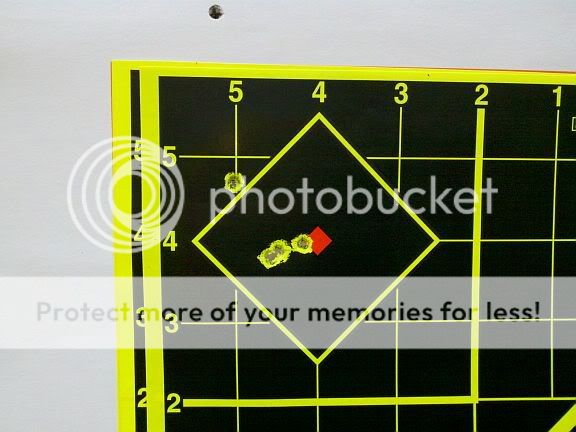
So I know I'm steady enough to shoot a tight group. Yes it's true that gun has almost no recoil but still man lol! This proves I have done nice groups in the past.

So I know I'm steady enough to shoot a tight group. Yes it's true that gun has almost no recoil but still man lol! This proves I have done nice groups in the past.
MKotur325
New member
Huh... I've never seen a rifle manufacturer guarantee accuracy at 800yds. There are no guarantees at that range! Even the folks that specialize in Long Range Accurate rifles guarantee accuracy at 100yds, and most of those do not include hunting bullets. I'm not saying that this rifle won't, but will take time and practice before 800 yards becomes easy.All the ex marines I work with said that .300 WM should be tac driving out to 800 yards easy.
Build confidence at closer ranges and work out in distance. Try some different ammo, find a load the rifle likes at 200. Something will a bullet worthy of a Grizzly.
You mentioned a few times that the rifle should be performing at longer ranges, what are your expectations for this rifle? You also mentioned hunting Grizzlies with this rifle, have you talked anyone about expected shot distances in that area? DIY or Outfitted?
Monteman11
Member
- Joined
- Jul 31, 2011
- Messages
- 192
The strange thing about the 200 yard target is that you have two rounds nearly touching while the rest are way off. To me, it seems like either a scope/mount or bedding issue, if of course flinching is 100% not plausible. 9Even the most experienced marksman can develop an issue with recoil)
I would go back and shoot the rifle again at 100 yards and see if it is truly grouping "good". It is very unusual for a gun to shoot really good at 100 yards and then shoot like shotgun at 200. You expect the groups to open up slightly, but not from 1' to 24". That is unless the bullet is doing something very funky, but again, you would most likely see this at 100 yards as well.
I would go back and shoot the rifle again at 100 yards and see if it is truly grouping "good". It is very unusual for a gun to shoot really good at 100 yards and then shoot like shotgun at 200. You expect the groups to open up slightly, but not from 1' to 24". That is unless the bullet is doing something very funky, but again, you would most likely see this at 100 yards as well.
rhipsher
New member
Now this is the typical groups I am able to do at 100 yards with the WM and I've been happy with that. But at 200 yards it was ugly. So I do believe something is up with the scope.
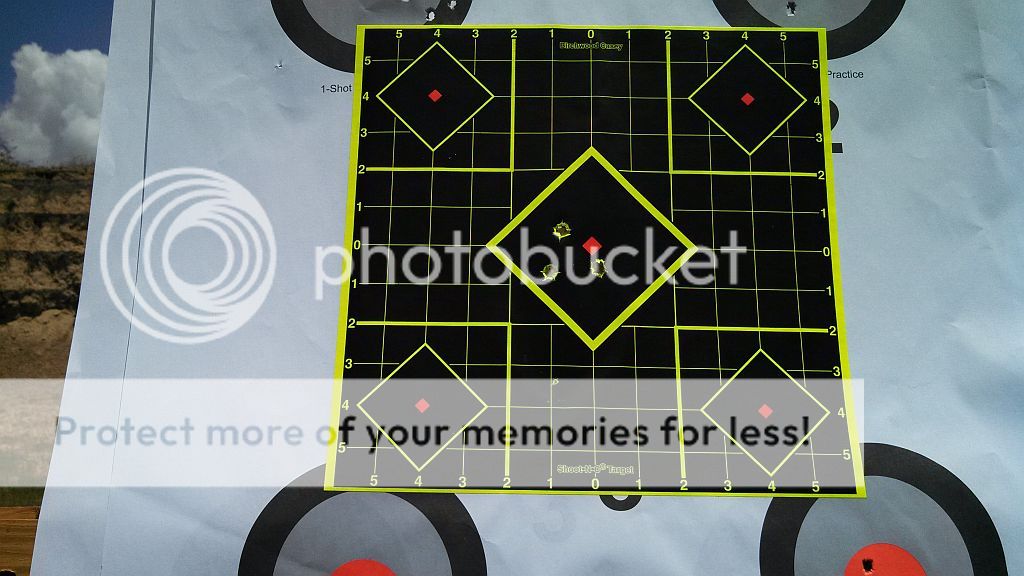

Monteman11
Member
- Joined
- Jul 31, 2011
- Messages
- 192
Did you shoot this group after the 200 yard group?
Why would the scope allow you to shoot acceptable groups at 100 but increase greatly at 200? Unless you have out of this world paralax issues, I'd say you have one or both of the following issues:Now this is the typical groups I am able to do at 100 yards with the WM and I've been happy with that. But at 200 yards it was ugly. So I do believe something is up with the scope.

1. The loads you are shooting are quite what your gun likes
2. The nut
If those groups truly are typical and your scope didn't take a dump between the firing of the 100 and 200 yard groups, I'd say you just need more practice. My suggestion is to fire a few groups with the lighter recoiling rifles, then shoot a few groups with the 300WM. Shooting until you shoulder is black and blue, IMO/E, is counterproductive for most folks...
rhipsher
New member
Mystery solved. My wife came clean and admitted that while she was organizing our walk in closet that the WM fell off the shelf and hit the floor. It was in the soft case but never the less hit the hard wood floor. I said next time don't touch my sheet.Why would the scope allow you to shoot acceptable groups at 100 but increase greatly at 200? Unless you have out of this world paralax issues, I'd say you have one or both of the following issues:
1. The loads you are shooting are quite what your gun likes
2. The nutbehind the trigger needs worked on...
If those groups truly are typical and your scope didn't take a dump between the firing of the 100 and 200 yard groups, I'd say you just need more practice. My suggestion is to fire a few groups with the lighter recoiling rifles, then shoot a few groups with the 300WM. Shooting until you shoulder is black and blue, IMO/E, is counterproductive for most folks...
ThndrChkn
Member
Now this is the typical groups I am able to do at 100 yards with the WM and I've been happy with that. But at 200 yards it was ugly. So I do believe something is up with the scope.

Not bashing anyone here, but if this is all the better your rifle shoots at 100 yds, I would be looking for some different ammo. I never shoot factory ammo in my stuff, but I do work on alot of rifles that the owners insist on only shooting factory fodder, and 99% of those will do as good or better at 300 yds, From the grid on the target, that's nearing a 2" group @ 100yds. I would look at several different brands and keep at it until the groups are at least half that size...
Here are a few examples of how my rifles shoot. Again, these are handloads:
This is from my son's 6.5x284 from 500 yds.
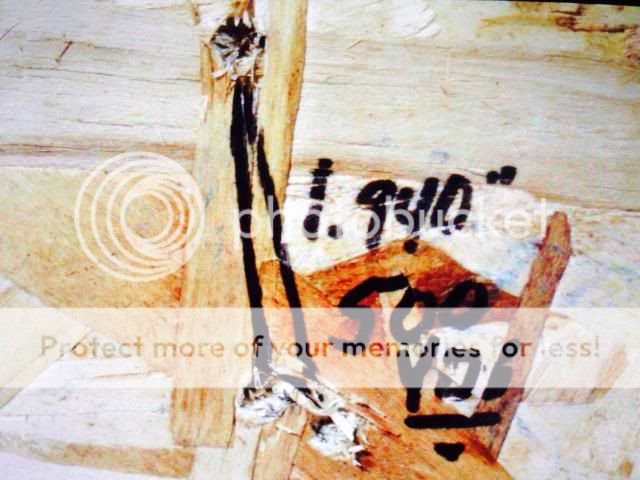
Same rifle from 800 yds:
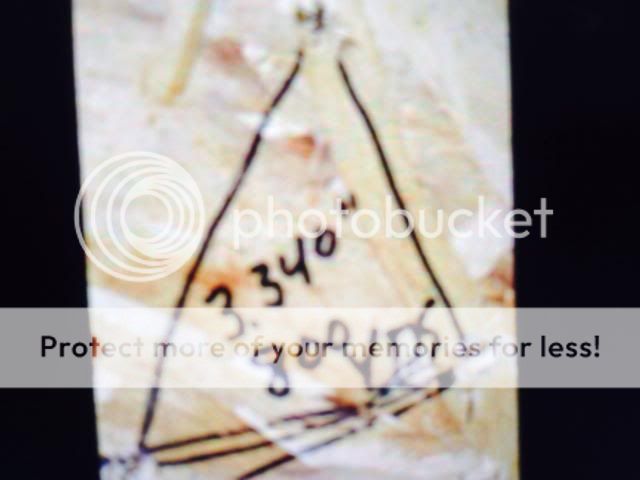
My wife's 6.5x284 from 300 yds: Yes, there's 3 shots under that nickel.

My 300 RUM from 300 yds. Shooting 208gr Hornady A-Max's... Clean, cold, barrel... For perspective, the plate is 8" tall x 13" wide... The group is 1.23"... This is the rifle I have for sale in the Classified section.
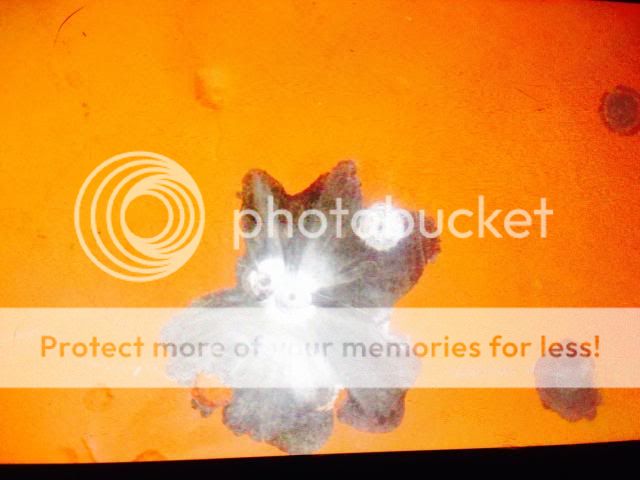
I saved the best for last. This is my great grandfathers old 250-3000 Savage. 1.3" from 100 yds through a peep sight with factory 100gr Rem Core-Lokt's
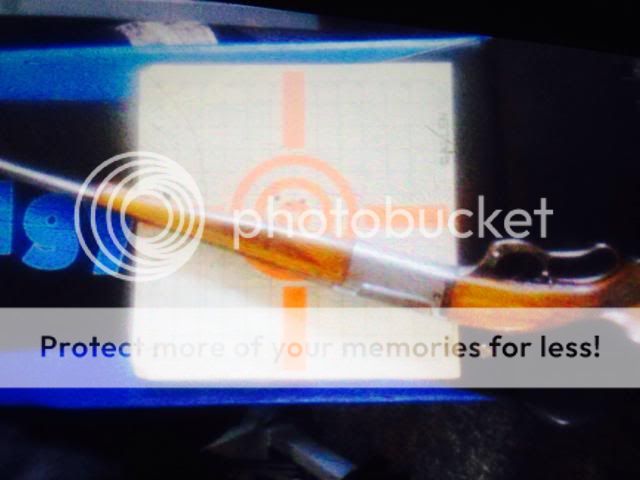
Like I said, I'm not bashing here, but merely pointing out that with some practice, and sometimes lots of it; and with some fine tuning, alot of guns are capable of some fine accuracy...
Good luck, and keep us posted...
ThndrChkn
Member
Another thing to remember, is alot of rifles that shoot good at 100 yds with factory ammo, may or may not (mostly not) shoot consecutively accurate downrange ... If you have access to one, a chronograph is almost invaluable when testing, even with factory ammo. I've seen many rifles shoot well under 1" @ 100 yds, but they have a huge extreme spread which in turn causes horrendous downrange accuracy... The lower the extreme spread, the better downrange consistency you'll have... If you don't have access to a chronograph, do your testing at 200-300 yds. This will tell you if your factory ammo is consistent or not...
rhipsher
New member
Thanks for all of the advice. It is valuable to me. That .300 ammo in the picture is the only thing I've ever put through that WM. It's definitely time to try some different ammo. At Bass pro shops my only three choices are Winchester, Federal and Core-Lokt 180g and 165g. And I'm sure that out of those Federal is the best choice to start with. I'll just find what factory ammo the rifle likes best and go from there. It's a learning curve.
Similar threads
- Replies
- 0
- Views
- 847
- Replies
- 2
- Views
- 381
- Replies
- 45
- Views
- 2K




